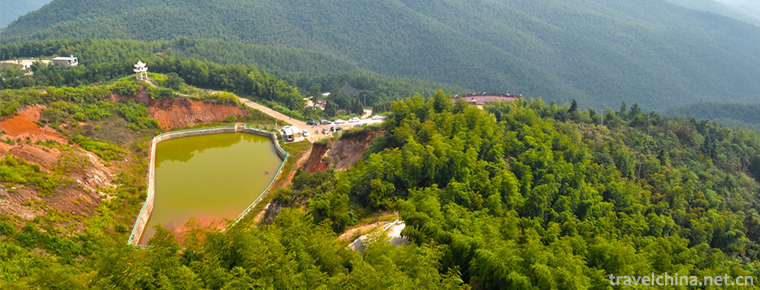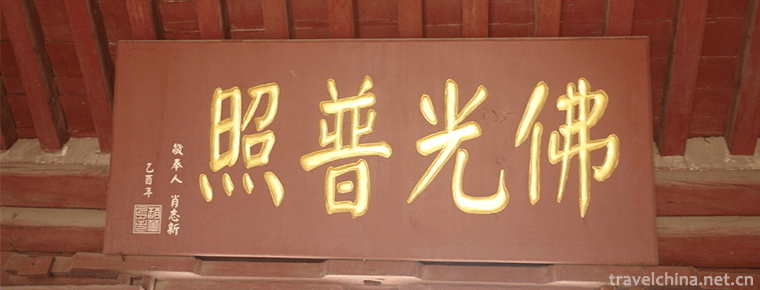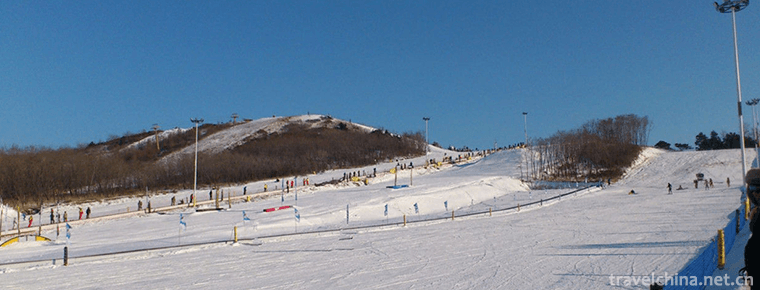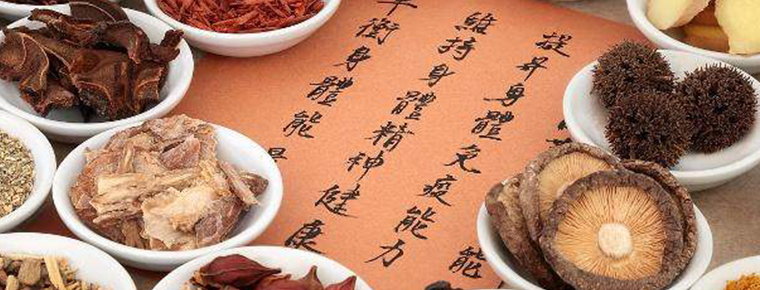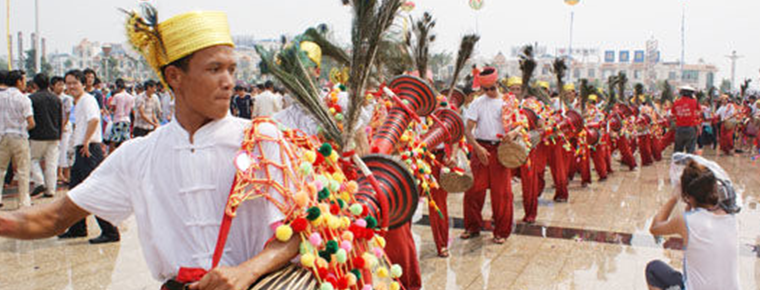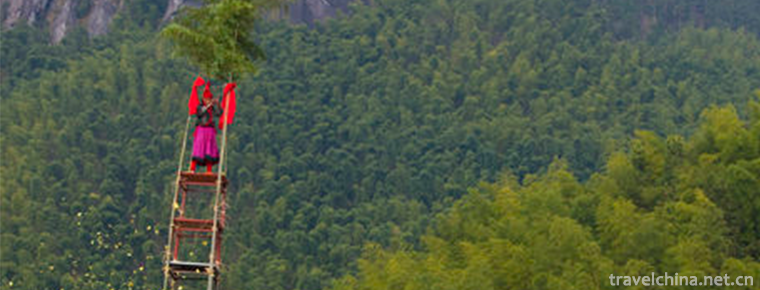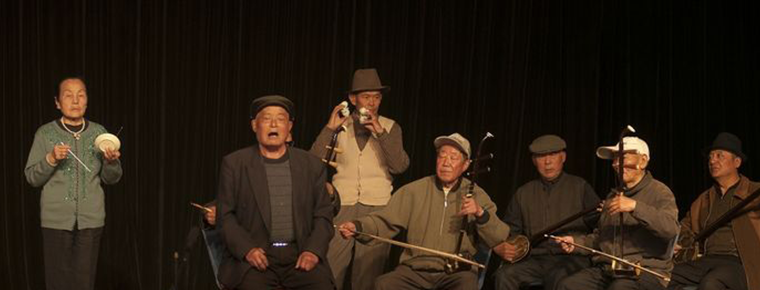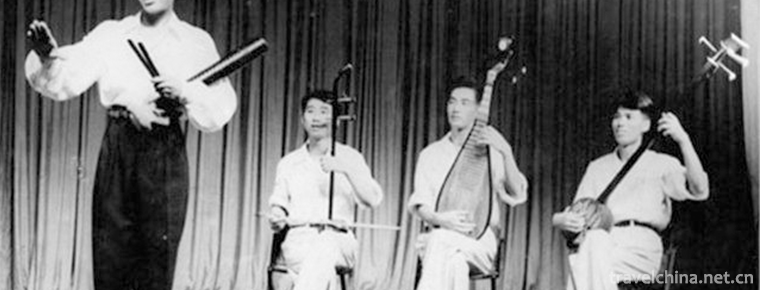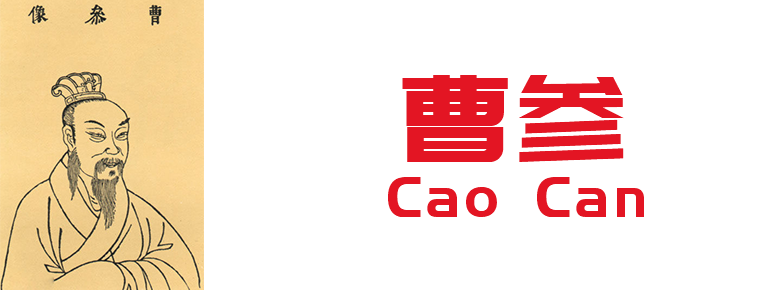Bashang grassland
Bashang grassland, also known as the first grassland in the north of Beijing, is located in Hebei Province. It refers to the meadow grassland formed by the steep rise of grassland and the reasons of climate and vegetation. One hundred kilometers north of Chengde is called the Bashang grassland area.
Bashang grassland is an important part of the Bashang Plateau, which is located in the border area between the Inner Mongolia Plateau and the southern foot of the Great Hinggan Mountains. The average altitude is 1500-2100 meters and the average temperature is about 1.4-5 degrees. It is located in Fengning Manchu Autonomous County, Weichang Manchu Mongolian Autonomous County, Zhangjiakou City, Zhangbei County, Shangyi County, Guyuan County, Chongli County, Kangbao County and the territory.
As far as tourism area is concerned, Bashang grassland is mainly composed of the first grassland scenic area in Beijing and the grassland Tianlu, which is an important part of Inner Mongolia plateau. Fengning Bashang grassland is located in Fengning Manchu Autonomous County, Hebei Province, north of Beijing. It is the nearest natural grassland to Beijing, also known as "the first grassland in Beijing".
Bashang grassland is a temperate monsoon climate, with long winter, no summer, cool and pleasant. The average temperature in July is 24 degrees Celsius. It is rich in water and grass, rich and beautiful, distinct in winter and summer, and different in morning and evening. It is the preferred place for tourism, leisure, summer resort and vacation in northern China.
Historical Evolution
In 2016, the newly opened Zhangcheng Expressway and Yudalu (Chengde Provincial Road Paddock Yudaokou to Fengning Datan Highway was officially completed and opened) started from Fengning Paddock Grassland and took Yudalu eastward for one hour to reach Yudaokou Scenic Area. Take the Zhangcheng Expressway westward for one hour to Chongli Grassland Tianlu. The scenery along the Zhangcheng Expressway and Yudalu Expressway is charming.
Zhang-Cheng Expressway is 375 kilometers long and passes through Zhangjiakou, Chongli, Guyuan, Datan, Fengning to Chengde. Visitors from Beijing and Tianjin can really take the Beijing-Chengdu Expressway-Zhangcheng Expressway to Fengning Bashang Grassland (Datan Town Exit). It can also take Beijing-Tibet Expressway to Chongli Grassland Tianlu and Zhangcheng Expressway to Fengning Bashang Grassland.
Of course, if you don't want to take the high-speed road, and want to see the scenery while walking, it is suggested that you take the Beijing-Chengdu Expressway-Huairou Exit-Beijing-Mi Expressway-Beijing-Jialu Exit-Fengning direction to reach Fengningba Grassland. The approach fee is low, the newly built road is easy to walk, and the scenery along the way is good, Huairou to Fengningba Grassland 230 kilometers. Mobile phone or car navigation is recommended.
The grassland scenery on the paddock dam is the best. It is a photographer's paradise. Many of the wind pictures on the Internet are taken on the paddock dam. The ticket of the scenic spot is 130/person valid for 3 days. Seven Star Lake on the grassland above the paddock is a good place to shoot sunrise and water reflection. It can also take sunrise pictures on the colorful peaks. The sunrise pictures will be very atmospheric.
Fengning Bashang Grassland Horse is the most ideal place for equestrian enthusiasts. The annual International Horse Racing Festival attracts many knights at home and abroad. Fengning Bashang grassland scenery is charming, is also a well-known film and television base, many domestic film and television works are filmed on the grassland of Fengning Bashang, international movie star Zhang Ziyi's maiden work My Father and Mother, Huanghong's "Twenty-five Children and One Dad" and other hundreds of film and television works are filmed from the grassland of Fengning Bashang. Fengning Bashang Grassland is the nearest grassland to Beijing. It is known as Beijing Backyard Garden. There is no admission fee in the scenic spot, and the cost of accommodation and food is low.
Zhangbei Bashang and Chongli Grassland Tianlu are newly developed tourist attractions in Zhangjiakou, and they are highly publicized. Grassland Tianlu is a highway built on the top of the mountain. It is also one of the ten most beautiful highways in the mainland of China. You can see the scenery on the dam and the windmill turning on the rolling hilly grassland.
Bashang grassland tourism needs to take thick clothes, the dam's dog days and nights only 15 degrees. The best way to travel to the Bashang grassland is to book rooms online in advance. During the peak season, the rooms are very tense. Find a local tourism website in Bashang to learn about the road condition information and current affairs of the grassland in Bashang. Because the grassland in the north of Beijing, Baidu will enter more local websites on the grassland in Beiba. Bashang grassland permits camping in the field and barbecues in the field are not allowed, mainly because of fire prevention.
The grassland in Bashang can only blossom green after mid-May. The autumn scenery is the best from October 10 to early November. The golden Bashang is colorful.
The Qin Dynasty belonged to Shanggu County, the Western Han Dynasty belonged to the northern border of Shanggu, the Eastern Han Dynasty, the Wei and Jin Dynasties were Xianbei people's land, the Northern Wei Dynasty was an important imperial town, and the summer resort of Liao, Jin, Yuan and Qing dynasties emperors. After thousands of years of vicissitudes, the dressing building of Empress Xiao in Liao Dynasty still stands on the Bank of Lightning River. Jingming Palace in Jin Dynasty, Chahannao Palace in Yuan Dynasty, Carmine Horse Farm in Qing Dynasty, Hunting Ground, Zhangku Ancient Business Road, Great Wall in Ming Dynasty, Ancient Beacon Fire Platform in Yuan Dynasty, Hongcheng Site and Jiuliancheng Site have a long history and culture. The Liao Dynasty was in Yanzicheng, and tourism began at that time. The "Cool Palace" in the city is exclusively for Royal hunting. Bashang has a long history and profound grassland culture. 700 years ago Genghis Khan commanded the Jin-Yuan War here. In the eleventh year of Dade (1307), Emperor Wuzong of Yuan Dynasty: Jianhuang Palace was built in Wangwu Chadu (Baichengzi), where the imperial court was the capital. The capital and imperial court imitated the capital (Beijing). It was called the four capital cities of Yuan Dynasty together with Dadu, Shangdu and Helin. It became the place where the imperial family spent summer, hunted and met foreign envoys. In 1681, Emperor Kangxi of the Qing Dynasty opened more than 10,000 square kilometers of hunting ground, Mulan paddock, in order to train the army and pacify the frontier. Since then, a military-colored hunting activity has been held every autumn, historically known as "Mulan autumn hunting". From 1681 to 1863, Emperors Kangxi, Qianlong and Jiaqing held "Mulan Autumn Monkey" in the paddock 105 times. Through "Mulan Autumn Snipe", it played the role of "Shuwu Suifan" and consolidated the frontier defense. Mulan paddock was also recorded in the history book with its unique status. Mulan means "whistle deer" in Manchu, that is, soldiers blowing wooden whistles, imitating deer song, luring and killing wild animals. Later Emperor Qianlong set up a palace, built temples and met with Mongolian and other tribal leaders on his way to the north. Thereafter, Rehe became not only a summer resort for Royal tours, but also the second political center of the Qing Dynasty outside Beijing.
But by the second year of Tongzhi reclamation, the forest vegetation was gradually destroyed, and then was plundered and cut by Japanese invaders and consecutive years of mountain fires. At the beginning of liberation, the original forest had disappeared and Saihanba area degenerated into a desert dune with yellow sand. After liberation, generations overcame many difficulties and built the largest artificial ecological forest farm in China. Today, the paddock forest, grassland and ancient Great Wall are called Saihanba National Forest Park. Saihanba is the essence part of the paddock. It is called "Saihanda Bahanseqin" in Mongolian. It means beautiful kaolin. The two sceneries of forest and grassland here reflect each other. The paddock is a scenic spot within 40-50 kilometers of Hongshan Military Racecourse. Therefore, it has become the most famous photographic base nearest to Beijing. It takes about ten days to half a month to play the Mulan paddock thoroughly. I suggest you find a guide to enjoy different scenery according to your own preferences.
Historically, there have been two "outbound" events in the past several thousand years. One is the establishment of the capital system in China, and the other is the economic climax in the mid-Qing Dynasty. First, because of political factors, the grassland on Bashang has become a national tourist attraction, and the latter, because of the opening of Zhangku Avenue and the trade between the Central Plains and Mongolia, Bashang began to become "civilized and prosperous". The Qing Dynasty was the glorious and prosperous period of the Bashang grassland.
Because the dam is located in a fortress, the summer water and grass are rich, and it has been the place where celebrities stop since ancient times. As early as Liao Dynasty, emperors of Liao Shengzong, Xingzong and Dao Zong visited the mandarin duck pool on the dam more than a dozen times for summer hunting.
In modern history, celebrity dams are more common. Before and after the September 18th Incident, Feng Yuxiang and Ji Hongchang garrisoned here, while the 29th army of Song Zheyuan fought against the Japanese army at that time. Japan's Tojo British aircraft flew from Changchun to Bashang to command the attack on North China. In 1934, Chiang Kai-shek went to the city and visited the scenery outside the fortress. He said, "How lucky I am to be in the south, and now I can enjoy the scenery outside the fortress."
In 1958, Guo Moruo led a visiting delegation of the All-China Cultural Federation to Dashang, including Ye Shengtao, Xiao Er and many other celebrities . Since 1992, Comrade Xiaoping, General Secretary Jiang Zemin, Premier Zhu Rongji and other party and state leaders have personally visited the villagers in Bashang, inspected the people's conditions, and carried out reconstruction of the Three North Shelterbelt.
geographical environment
position
Bashang refers to the northern part of Beijing and the southernmost part of Inner Mongolia Plateau, including Zhangbei, Shangyi, Kangbao and Guyuan counties on Zhangjiakou Dam, Fengning and Weichang counties on Chengde Dam, with a total area of more than 200,000 square kilometers.
Bashang grassland is located at the southeast end of Inner Mongolia plateau and at the south foot of Daxing'an Mountains. Bashang grassland is an important part of Inner Mongolia plateau. From West to east, it mainly distributes to the east of Zhangbei County, Zhangjiakou City, Hebei Province, to the north of Daliang, Huangqi Town, Fengning County, North of Daliang, Huangqi Town, Fengning County, and to the north of Daliang, Machinery Forest Farm Town, Weichang County, Hebei Province. After crossing the boundary river, it enters the Ulanbutong grassland in Inner Mongolia. They all belong to the grassland of Bashang.
As far as tourist areas are concerned, they are mainly divided into the areas of Weichang Dam (Mulan Paddock), Fengning Dam, Zhangbei Dam and Guyuan Dam. They are important parts of Inner Mongolia Plateau. Among them, Wulanbutong Grassland, Mulanweichang County, is the most beautiful, but also the farthest from Beijing. The area has an average altitude of about 1500 meters, no summer, comfortable and pleasant, gentle terrain, mostly hilly grasslands, with a total area of about 350 square kilometers. It is an ideal green health tourism and leisure resort.
Main terrain
Bashang is a geographic term, which refers to the meadow grassland formed by the steep rise of grassland and by the reasons of climate and vegetation. Now refers to 100 kilometers north of Zhangjiakou to 100 kilometers north of Chengde, collectively known as the Bashang area. As far as tourist areas are concerned, they are mainly divided into Fengning Dam, Fengchang Dam, Zhangbei/Kangbao Dam and Guyuan Dam. Bashang grassland is a part of Inner Mongolia grassland with a total area of about 350 square kilometers, especially Kangbao grassland, which is close to Inner Mongolia. The average altitude is 1486 meters, and the highest altitude is about 2400 meters. It is the birthplace of Luanhe River and Chaohe River. Living in the vast green field with clear grass and clouds and numerous flowers, it seems that there is a feeling of "the sky is falling and the clouds want to rub shoulders". The average temperature of tourism season is 17.4 C, which is an ideal green and healthy tourism and leisure resort.
The terrace is dominated by mountains. There are many larches on the mountain. It is suggested to go in autumn. It's cold, but the scenery is beautiful. It's interesting to walk back and dig your own food.
Bashang rises sharply at the junction of North China Plain and Inner Mongolia Plateau, forming a ladder, so it is called "Bashang". The average altitude is 1500 - 2100 meters, and the latitude is between 41 and 42 degrees. The average annual temperature is about 1.4-5 degrees. It starts from Zhangbei and Shangyi counties in Zhangjiakou City in the west, and from Guyuan and Fengning counties in the middle to Weichang County in Chengde City in the east. The scenery on the dam is the most beautiful; in summer, the sky is blue, the grass is green, the clouds are beautiful, the wild fragrance is fragrant; in autumn, the mountains are red, the wild fruits are fragrant; in winter, the snow is covered, the jade trees are blossoming, here is like a beautiful poem, a beautiful picture.
The topography of the dam is hilly and plain, high in the southeast and low in the northwest, with dense river network and abundant water. Bashang grassland is a plateau grassland with an elevation of 1200 meters to 1400 meters. There are many gates and peaks along the dam, the highest being over 2500 meters above sea level. Climate: The last continental monsoon climate in Daba. Cold, windy and drought are the most obvious characteristics of the dam. The average annual temperature on the dam is 1-2 degrees Celsius, the frost-free period is 90-120 days, and the annual precipitation is about 400 millimeters.
Bashang grassland is a typical arid grassland. The local people call it grassland beach. The grassland is dominated by upland grasses. The height of grassland is 15-40 cm. This kind of grassland accounts for most of the grassland in Bashang. Meadow grassland is the best kind of grassland, the main plant is perennial herbaceous plants, about 30-60 cm high, there are a variety of wild flowers blooming in the meadow. Guyuan's Five-Flower Meadow, Lightning River, Chabei Ranch, most of the enclosure areas, Fengning Datan parts of the grassland are common.
Forests: The natural forests on the dam are mainly distributed in the area of Saihanba, southeastern Guyuan and along Fengning Dam. Natural forests are mainly birch, poplar and apricot forests; shrub forests include elm, small red willow, Salix mongolica, caragana, etc. Pine trees are dominant in the eastern part of the plantation dam, and poplar trees are dominant in the western part. Coverage rate ranges from 8% to 12%, especially the paddock has reached 30% to more than 70%, which is the location of the National Forest Park. The ecological environment here is good. The West is generally characterized by desert, with more plantations. The number of trees on the dam directly affects the ecological environment around Beijing.
River Wetland
Most of the rivers above the dam are inland rivers, which are seasonally strong and often dry up. In rainy season, mountain torrents and rivers gather together to form "Nao". The largest Nao is in Shangyi and Zhangbei, which is called "Chahannao and Anguli Nao". The largest outflow river is the Luanhe River, which originates in Fengning and flows through Guyuan, known as the Lightning River, through the Blue Banner as the Shangdu River, and after Duolun, through Fengning and the paddock to the South as the Luanhe River. There are as many as hundreds of natural bamboos and reservoirs on Naohu and reservoir dams. The larger ones are Chahannao of Shangyi, Anguli Nao of Zhangbei, Huanggai Nao of Huangyuan, Lightning River Reservoir of Guyuan, Fengning Wetland, Moon Lake of paddock and General Bubble. There are natural fish growing in these waters, mainly crucian carp and carp. Wetlands surround reservoirs and Naohu, with abundant water and grass, swans and magpies.
Bashang grassland is an important part of Bashang Plateau. The water is clear, the grass is shoulder-to-shoulder, the Yellow sheep are in flocks, and the ecological environment is excellent. Mongolian calls this place "Hailiu Tu", which means the place with the style of water and grass. The sky above the dam is tall and refreshing, the grass is fragrant, the sheep are clouds, the horses are galloping, the peaks on the dam margin are clustered, the water is rippling, the forest is dense, the mountains are rich and the game is endless; after the dam is built, you will have a pleasant sense of summer relief. The cool breeze swept across your face, and in an instant it penetrated into your skirts. Looking around the fields, on the dense green meadow, there are stars of wild flowers. Large areas of birch forest, densely packed with jade muscles, layers of branches and leaves, leaking speckled sunshadows. The beautiful Lightning River flows quietly around you like a jade belt. Cattle, horses and sheep live and forage, and the rough singing and crisp whipping of herdsmen, combined with the pleasant bird sounds, add infinite vitality to the plain grassland.
The grassland is fresh and pleasant in summer. Beautiful wildflowers begin at the edge of the dam. Some are brilliant as Venus, some are delicate as red hairpins, and the colors of the four seasons are different, with distinct densities and shades in the morning and evening. At night, the moon bonfire is a good place to talk about love; you can chat, dance and sing with tourists from south to north by the bonfire; you can also sit alone on the grassland and enjoy the fun of solitude. When you get up in the morning, you can walk on the soft natural mat and listen to the songs of birds, and you can also see the sunrise on the grassland. A red sun is rising, and the transparent dew on the green leaves turns into shining pearls; all kinds of plants turn green in an instant; horses, cattle and sheep begin to creep on the vast grassland, which is really a grassland scenic spot of "the sky is vast, the wild is vast, the wind blows grass is inferior to cattle and sheep".
Main attractions
Saihanba Park
Saihanba National Forest Park is the largest national forest park in northern China, with a total area of 1.41 million mu, including 1.06 million mu of forest and 200,000 mu of grassland landscape. Among the 1.06 million mu forests, there are 760,000 Mu plantations of larch, Pinus sylvestris var. mongolica and spruce, and 300,000 Mu natural secondary forests of birch, poplar, oak and maple.
In spring, everything is recovering and the snow is still shining; in summer, there is a vast expanse of forest. If you can take a tour over the forest park by light tourist plane, you will have another feeling. In autumn, autumn, the air is bright, the forest is full of dyes, red leaves overflowing with golden lily, red maple leaves, light green Pinus sylvestris... Winter, thousands of miles of ice, thousands of miles of snow.
First grassland
The first grassland in the north of Fengning is located on the Fengning Dam. It is a famous tourist summer resort and is called the green corridor connecting northern Xinjiang with Beijing and Tianjin. There are many scenic spots such as the First Grassland in Beijing, Baiyun Ancient Cave, Jiulong Qisong, Hongtangsi Hot Spring and so on. There are also paper-cut, Teng's cloth paste painting and other folk arts and unique Manchu and Mongolian customs.
In summer, the grass warblers fly and the flowers are everywhere; in autumn, the grass and trees fall; in winter, the snow is shining. In summer, tents can be set up on the grasslands to spend the summer and summer; in autumn, you can gallop freely here and have a ride addiction. Every year in July and August, it is the most beautiful season on the grassland. At this time, more than ten resorts on the grassland are bustling. There are many entertainment items such as bonfire party, folk song and dance, horse racing, shooting, archery, glider and so on. There are also water projects such as Lake speedboat, fishing and so on. Food can be tasted Roast Whole sheep, milk tea, milk flavor food, grassland Lightning Lake fish varieties, can be a full feast.
Birch forest
The charm of the dam is the beauty everywhere along the way. After several frosts in autumn, Pinus koraiensis, Spruce and Birch on the grassland of the dam began to shake their spirits and begin their most brilliant journey in life. On the dam, all eyes are covered with birch forests. Like the birch forest after autumn, layers of forest dyed. The birch trees on the dam are mostly clustered and curved, with a different flavor. The local herdsmen say that they are like Populus euphratica in the desert of the Gobi Desert in the northwest of China. I saw the birch trees here for the first time, and believe him...
Lover Valley
Fengning has a "film and television village" (Datan Erdaohezi Village Ranch Donggou Group) commonly known as Valentine Valley. Fengning County because of her beautiful grassland scenery on the dam, and simple rural folk customs. It has become the preferred location for many films and TV works. Here have been filmed "My Father and Mother", "Twenty-five Children and One Dad" and "Jinxiu China" and other famous film and television works. There is a natural village called Donggou in the first grassland of Beijing in Fengning. Despite the small village, which is both primitive and remote, many famous film and television artists have taken a fancy to it. They have shot more than ten films and TV dramas here. Among them, Zhang Yimou and Huang Hong's two movies have won awards many times. Zhang Ziyi has gone from here to the world.
Liushugou Natural Scenic Spot
Few visitors to the Grand Beach Scenic Area of Fengning do not visit Liushugou. It is located 7 kilometers southeast of Datan Town, named for its slopes and rivers all over the willows and willows. The total area is 30,000 mu. From midsummer to Liushugou, the summer breath disappeared and the heart was relaxed and happy. It really returned to nature. In early autumn, yellowish birch forests, dense green spruces, pink shrubs, verdant pines and hilly trees with red fruits hung in the ditches and rivers are all moving autumn maps. Liushugou is a multi-colored grassland scenic spot with streams, flowers, grasslands and forests.
Lightening Lake
Lightning Lake, the largest lake in the upper reaches of Luanhe River, is named Lightning River for the river before it enters the lake. In the vast grassland of the sky, there is such a bright, clear and beautiful lake that the local people call it Lightning Lake. Although the origin of the name has no way to verify, but in the vast grassland of the sky, the sparkling clear lake water, really can give people a lightning surprise. Perhaps there used to be a beautiful love story about the lightning fairy in the sky and the hardworking and brave grassland lads. So when you look at Lightning Lake, the lake is rippling under the sunshine, you will feel that the lake is so gentle, like a beautiful girl telling you what to say...
Tianma Flying Town Fairy Tale Grassland
Tianma Flying Town Fairy-tale Grassland Scenic Area , located in the first grassland scenic area of Fengning Manchu Autonomous County, Hebei Province, is a large-scale comprehensive tourism scenic area with flying sports, equestrian skills, fairy-tale grassland and European customs as the main contents on "National No.1 Scenic Avenue" and "Tea-salt Ancient Road" in Qing Dynasty.
Interactive with Snow White, experience the beautiful artistic conception of European fairy tales, participate in interactive performances of fairy tales such as Little Red Riding Hood, Sleeping Beauty, Candy House, and experience the fairy life of Hobbits.
Shenxian Valley Colorful Forest Scenic Area
Shenxian Valley Colorful Forest Scenic Area is a natural cultural scenic area with sightseeing, participating experience, entertainment, leisure and other contents, with the development of leisure tourism as its main direction, natural resources as its backing and Manchu culture as its connotation.
This project covers a total area of 20,000 mu of total building area: 20,000 square meters. The main construction contents include: Hotel Resort area, commercial shopping area, Manchu Cultural Park and ecological leisure area.
The river river
In the late Qing Dynasty, with the decline of the national situation, the imperial hunting grounds were closed and reclaimed, and the forest resources were seriously damaged. The whole enclosure was desolate, Sandy and wild animals were broken. The north and west of Saihanba are adjacent to the Keshketeng Banner and Duolun in Inner Mongolia across the Turigan River. The mountain road passing through the Yudaokou and Sandaokou Branches to the site is several tens of kilometers along the murmuring Turigan River. On the left side is the Hunshandak Sandy Land, with sparse trees scattered on the hillside, and low grass bare sandy land hard to hide. The grassland is seriously Sandy and mottled land. On the right side of the mountain are trees and lush. Hunshandak Sandy Land has mercilessly devoured the grassland on one side of the river, blown up the wind to cover the sun with sand and dust, while on the other side is the sound of Songtao. Parking here, we can not help thinking about the strong contrast between the two landforms on both sides of the Tuligen River.
Sai Han Temple
In this land once hunted by emperors, legends are colorful - in the Qing Dynasty, hunting in autumn became a royal event. Once, Kangxi led members of the royal family and tens of thousands of soldiers to the paddock. But this time, the weather was not beautiful, and the hunting team was moving slowly in successive autumn rains. Some people suggested that the emperor wait for the rain to stop before he left. Kangxi looked at the sky and said, "Even if it rains red, we must go!" Suddenly, it rained innocently. Kangxi couldn't help wondering, "Is there anything that wants to be sealed?" Before the words fell, Kangxi's eyes lit up: a small pond appeared a few steps ahead, and a three-legged Golden Toad lay on a stone in the pond. Kangxi was shocked and said to Jinbu, "If you can stop the rain, I will make you experience Buddha for Saibei." The Golden Toad disappeared and the rain passed. Kangxi ordered the construction of a small temple here, named "Saibei Spiritual Buddha", also known as Saihanfo. It is said that this Buddha is really spiritual. If a pedestrian loses his way in the forest, he can find his way home by worshipping Jinbu.
Forest Sea and Snow Plain
Saihanba National Forest
Saihanba National Forest Park is a forest grassland eco-tourism resort with the main characteristics of "ecology, imperial, folk custom". It was approved by the Ministry of Forestry in 1993 and established as the largest forest park in northern China.
In 1999, it was named "Eco-tourism Demonstration Zone" by Hebei Provincial Government. In 2002, it passed the acceptance of the National Tourism Administration and entered the ranks of AAAA-level tourist attractions. In 2005, it was selected as China's best forest park by the All-China Federation of Industry and Commerce, the Asia-Pacific Tourism Federation, the World Overseas Chinese Tourism Cooperation Organization, and the Capital Tourism Group Research Institute. In 2006, it was recommended as the silver prize of "China's 50 Most Valuable Places for Foreigners to Go".
Hanba National Forest Park is located in typical forest-grassland ecotone and plateau-hill-Mandian-Jiba mountain migration area. There are forests and grasslands in the park, rivers and lakes, mountains and plateaus, hills and Mandian, historic relics of the Qing Dynasty and rich Mongolian customs, beautiful scenery and cool climate. Every year, hundreds of thousands of tourists from home and abroad come to this park for sightseeing and vacation, which is the most beautiful eco-tourism resort near Beijing and North China. One of the most famous eco-tourism scenic spots in the region.
Autumn Saihanba is a colorful world, yellow larch, birch, red oak, maple, green spruce... Looking from afar, the forest is full of colour and splendor. Forest morning and evening are worth enjoying, autumn rainy, fog lingering, beautiful scenery. If you are lucky, you can catch up with the heavy snow, which is nearly a foot deep, and create a forest, sea and snow plain in your artistic conception.
Saihanba Ski Resort
Mulan paddock ski resort, located in Saihanba National Forest Park, has an average altitude of 1600 meters. As early as the Qing Dynasty, it was the winter field training base for soldiers of the Eight Banners. It has a superior natural geographical environment and relatively cheap price. In the middle of winter, snow-capped, silver-clad, a school of northern scenery, become a place for skiers to yearn for. Lama Mountain is the place to shoot sunrise and photography. It is very close to the headquarters of the military horse farm.
Princess Lake
The difference from General Paozi is that there are birch forests around Princess Lake. It's a long way from the headquarters of the military horse farm. It's a hard place to go, and it takes a long time to go back and forth, unless you live there.
Hongshan Military Racecourse
Hongshan Military Horse Farm is a rare kind of horse farm in China, which belongs to Beijing Military Region. The grassland here is already within the boundaries of the Keshketeng Banner. After autumn, you can see the golden birch trees in the distant grassland. Xiaohetou Village and the nearby pasture are good places to photograph the pastoral scenery.
East ditch North Ditch
It is a north-south trench, because it is located in the north of the original site, so the local people used to call it Beigou. Beigou stretches over ten kilometers across the north and south of the military horse farm. There are many kinds of secondary forests in the horse farm. The hillside is covered with birch trees. At the bottom of the trench, Tangliu is mixed with mountain vines, mountain dings, wild hawthorn trees, locust trees, elm trees and so on. Beigou is the area where the horse farm allows Lun to graze, so the beautiful scenery of "wind-blown grass with low current cattle and sheep" can only be seen here. Because it is north-south trend, and the terrain is rich in changes, combined with blue sky, white clouds, cattle and sheep, green grass, very suitable for morning and evening side, backlight shooting, is out of the "film" high-frequency area, is a must for photographers.
Three Guai Zi gou
The rapeseed flowers in Sanjiaozigou are very famous. They blossom in mid-late August every year. They last for two weeks at most, and they cover more than 2,000 mu. Here you can pick mushrooms and golden lotus. The main scenery is birch forest and potato fields, with natural football fields.
Birch ditch
The main scenery is Betula platyphylla forest, which belongs to the only way to Quke Banner. The end point is Betula Valley Forest Farm. The surface water system in the district is developed, the water quality is good, and the stream water in the valley is widespread. It is the birthplace of Baicha River, Tuligen River, Saling River and Luanhe River. There are well-developed riverbank marshes on both sides of the river, which constitute wetlands. The famous lakes such as General Paozi and Princess Lake are all located here. Climate: Huamugou National Forest Park is located in the transition zone from temperate zone to cold zone in China. It belongs to terrestrial climate with obvious changes in four seasons. Winter is long and cold with snow cover of 30-50 cm. Summer is short and warm, with abundant precipitation. In spring and autumn, the climate is cool and the precipitation is less. The annual average temperature is - 2 C and the annual rainfall is 420 - 480 mm.
Wucai Mount
Mount Wucai is one of the main scenic spots for viewing the autumn scenery of secondary forests in the area under the jurisdiction of the horse farm. Its original name is Yujiadashan. From late September to early October of each year, due to the effect of micro-frost, different tree species on the mountain show different colours because of their different cold resistance. The natural ecological protection area with the largest number of tree species, animals and birds in the field.
Because of its brilliant color and distinct layers, many Chinese and foreign photographers compete to take pictures in this season every year. Numerous pictures with the background of Wucaishan are published in Chinese and foreign newspapers and magazines. Nearly 100 pictures have won international prizes.
Grand Canyon
Located in the northwest of the reception center of the scenic spot, it covers a total area of 40 square kilometers. From north to Shuangcha River and small canyon, and from south to the front of the backstage bridge, the whole length is 10 km. The water of Xiaoluan River flows out from the bottom of the canyon from north to south, dividing the canyon into two landforms. The eastern part belongs to the remaining veins of Yanshan Mountain. Primitive secondary birch forests grow on steep mountains. The western part belongs to the remaining veins of Inner Mongolia Plateau. Flowers and plants, elms, apricots and sparse birch forests grow on the hilly land. The Grand Canyon is a breeding ground for roe deer, black fowl and pheasant, with abundant plants and various species. The Luanhe River at the bottom of the valley grows very precious fine scaled fish. When Emperor Kangxi had eaten, there were poems praising him: "Nine bends of the Yixun River, with tail fish, fine scales and thorns pulled out in autumn, Xukou Du blowing. Yinyishi single type, light sniff fishery spectrum sparse. We should also ask Zhang Han what he remembered.
Qixing Lake Wetland Park
Located about 2.5 kilometers northwest of Saihanba Mechanical Forest Farm, seven natural lakes of different sizes and shapes are distributed in the wetland area of 1 million square meters surrounded by mountains. The sky overlooks the seven stars of the Big Dipper, hence the name Seven Star Lake. The newly built park has nearly 5000 meters of wooden trestle road, 8 viewing platforms, 2 cruise ship terminals and 4 wooden bridges. More than 1200 square meters of spacious entrance platform, natural bluestone slabs are not jointed into the wall of the entrance landscape, highlighting the rugged characteristics, the wall is inlaid with titanium "Seven Star Lake Pseudostellaria Wetland Park", natural stone and highly industrialized titanium and gold materials form a sharp contrast, each other. The ornamental windmill and wooden pavilion for visitors'rest make the whole park fresh and elegant, with the traces of artificial carving and natural, simple and harmonious.
Taifeng Lake
The surface area of the water is 300 mu. The water surface is calm as a mirror and clear as a bottom. Under the bright sunshine, the lake and the mountains are beautiful and picturesque. Especially at sunset, visitors climb the mountains to overlook the eastern side. Taifeng Lake is like a handle of jade embedded in the mountains and rivers of Saihan Dam. Looking at the lake in the west, the sky is full of glorious clouds, the lake bottom is glowing with golden light, and the water and sky are the same color. When the sunset approached the distant mountains, there would be half a red sun on the ground and under the water, and gradually close to the horizon, the sky and underwater red light, spectacular.
Legend has it that Emperor Qianlong came here for hunting when he rode on the eastern hill and looked at it. When he saw that the clear lake was winding like a jade, he named it Ruyi Lake, also known as Taifenghu Lake. To the north of this area are twelve camps that Emperor Kangxi put down the Gerdan rebellion, so Emperor Qianlong set up camps near the Ruyi Lake many times when he went hunting in Mulan paddock. This is where the film and television drama "Crescent Gear" was filmed. Huanzhu is a special scenic spot.
Ulan Butong Grassland
Ulan Butong Grassland is the nearest grassland from Beijing, known as the back garden of Beijing. Grassland is endless, forest farms are rolling, dozens of Mongolian yurts are arranged in eight-shaped patterns, unique in shape, and welcome tourists from all directions with a smile. Silver-clad winter snow lasts for up to five months and is a paradise for skiers.
To the east, Saihanba is a famous grassland on the Bashang River. The scenic spots here are: Ulan Butong Peak, Betula Forest, Hongliulin, Ulangong River, Bashang Grassland, Twelve Company Camps, Point General Tai, Ancient Battlefield, General Paozi, Twelve Company Camps, Tomb of Tong Guogang, etc. Nearby, there are Ulan Butong Grassland Resort and General Paozi Resort.
General Pao
Groundwater seeping from grasslands will naturally form a small lake called "bubbles". Saihanba passes northwest through Hongshan Military Racecourse to General Paozi, which is the famous ancient battlefield of Ulan Butong. Ulan Butong, Mongolian for the meaning of the red altar mountain, Kangxi 29 (1690), the Junggar tribal leader Gerdan launched an armed rebellion, the Qing Dynasty court sent troops to suppress, people in memory of the fighting in the battlefield of Uncle Kangxi Tong Guogang General, the small lake named General Paozi.
The water here is open, surrounded by mountains, is the best place to take sunset photos. The reeds in the water grow in clumps, and they are scattered in disorder. It seems to be a prop for the photographer. Every day at six o'clock, a large group of horses will rush to the lake to drink water. When the horses enter the water, the splashing water is very beautiful. Night falls and spends a night in a yurt beside Paozi, sitting around a campfire, enjoying the sobbing horsehead and the solemn Mongolian long tune. Late at night, the pillow carefully appreciates the quiet grassland night romantic interest, the rustle of wind blowing reeds in the ear will make people sleep. Get up early in the morning to breathe the fresh air of the grassland, watch the morning light on the lake, and see the first line of sunshine dye everything in front of you golden.
Se Han tower
Saihanta Tower is 4 meters high, 42.8 meters high, 21 meters long, seven stories and octagons, antique architecture. The tower is equipped with walking elevators and elevators, which can accommodate 100 people for sightseeing at the same time.
Moon Lake
The scenic spots are located in the west section of dam beam of Chesai Highway, 0.5 kilometers away from Chesai Highway, with good geographical location and convenient transportation. The Moon Lake scenic area covers a total area of 10 square kilometers. The lake water is like the sun embedded in the grassland. So it is called Moon Lake, and Mongolian is called Salano Lake.
Baihua slope
In the northwest corner of Moon Lake, Yang Shangkun, President of the State, came here in 1990 to praise Baihuapo as a unique dam. On the green grassland, there are clusters of "small flames" which are blooming golden lotus. When Qianlong looked at this peculiar scene, he chanted, "Yellow flowers outside the fortress are like nails in gold." Ji Xiaolan, a university scholar, immediately answered, "Baita in Beijing is like a silver drill into the sky." Left a good couple for thousands of years, the TV series "Return Zhuge" crew came here to shoot scenes, leaving a deeper impression on people. Golden lotus is also called dryland lotus, golden hibiscus and golden plum grass. It mainly contains biological salty and brass substances. It has the functions of clearing heat, releasing fire, detoxifying and eliminating inflammation. So it can be used as medicine and tea.
Two Longquan
Erlongquan is located in the southwest end of Ulan Butong Tourism Development Zone. It is the junction of two provinces (Hebei Province, Inner Mongolia Autonomous Region), Sanmeng City (Xilinguole League, Chifeng City, Chengde City) and Sanqi County (Duolun County, Keshketeng Banner, Weichang County). Erlongquan is named Erlongquan because it happens to be built in the sandwich of "Tuligen River" and "Zhaoguyong River" at the source of Luanhe River. Two rivers, one in the southwest and one in the southeast, zigzag through, just like two Dragon Drama Pearls. Erlongquan is 50 kilometers away from Duolun County, 170 kilometers away from Keshketeng Banner and 240 kilometers away from Weichang County. It is the main tourist passage from Keshketeng Banner to Duolun and Duolun to Mulan Paddock, known as the "Golden Triangle of Stoppage". In spring, everything here recovers and the grass grows like grass; in summer, flowers fight for beauty and birds fly freely; in autumn, there are layers of forests with yellow and green reflections; in winter, there are silver-coated and extraordinarily enchanting.








-
Cai Lun Zhuhai
Cai Lunzhuhai is located in Huangshi Town and Dayi Town, Leiyang City, a famous historical and cultural city in central and southern China. It covers an area of 100 square kilometers and has a central.
Views: 110 Time 2019-01-04 -
Feng Guo Temple
Fengguo Temple is located in Yixian County, Jinzhou City, Liaoning Province, China. It was founded in the ninth year of Kaitai, Liaoning Province (1020). It was first named Xianxi Temple and later cha.
Views: 150 Time 2019-01-12 -
Jinhu Yang National Forest Park
Zepujin Lake Yang National Forest Park is located 40 kilometers southwest of Zepu County in the Gobi Depth, located in the upper edge of the Yerqiang River alluvial fan.
Views: 296 Time 2019-01-23 -
Shenyang Weipo Skiing Ground
Shenyang Qiaopo International Skiing Resort is located in AAAA Scenic Area of Qiaopo in Shenyang, which is surrounded by mountains in the northeast direction and boundless forest sea..
Views: 224 Time 2019-02-08 -
Traditional Chinese Medicine Culture
Traditional Chinese medicine (TCM) is the oldest and most complete medical system in the world. It is not only a method of treating diseases, but also a complete philosophy of the universe and life..
Views: 135 Time 2019-04-22 -
Dai Elephant Foot Inspiration
There is also a legendary story about the origin of the Dai elephant drum. Legend has it that Mengzhai area in ancient times was a beautiful lake rippling with blue waves. But there are pythons and to.
Views: 167 Time 2019-04-24 -
Turn over to the nine floor
The Ninth Floor, also known as the Ninth Floor, is a traditional folk activity popular in northeastern Fujian and southern Zhejiang. It is mostly used in rituals such .
Views: 303 Time 2019-04-29 -
Five Palace Tunes in Haizhou
Haizhou Five Palace Tunes is a traditional folk music with a long history. It is an important link of Ming and Qing folk songs in Jiangsu Province. It is a precious relic of ancient "Zhugong Tune.
Views: 109 Time 2019-05-02 -
Wooden Fish Songs
Muyu song is short for Muyu, also known as Touyu song. It is one of the traditional rap and singing arts in Guangdong Province and belongs to the system of Tanci. It is popular in the Pearl River Delt.
Views: 151 Time 2019-06-06 -
She nationality novel song
She nationality novel song originated from Bailukeng Village, Xinan Town, Xiapu County, Fujian Province. It was adapted and created by She nationality folk singers according to their national living c.
Views: 213 Time 2019-06-14 -
Cao Can
Cao Can(? - 190 BC) , Han nationality Peixian people In the Western Han Dynasty, the founding fathers and famous generals were the following. Xiao He Later, the second dynasties in the Han Dynasty wer.
Views: 285 Time 2019-09-15 -
Nanchong landform
Nanchong terrain inclines from north to south, with an altitude of 256-888.8 meters. The main geomorphic types are hills, and 1 / 3 of them are high hills and low mountains, middle hills and valleys, and low hills and dams. The geomorphic types of the whole city.
Views: 321 Time 2020-12-17
